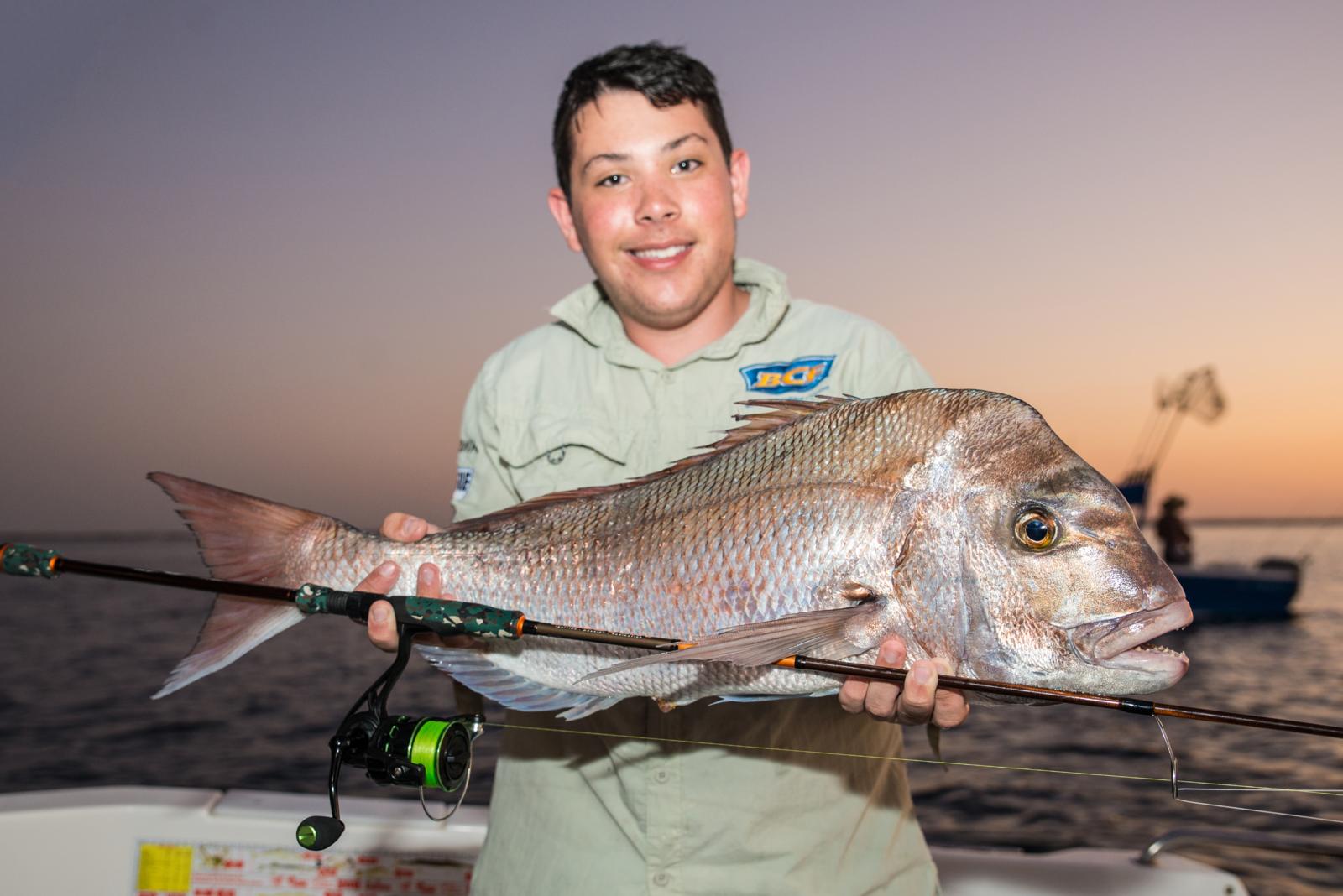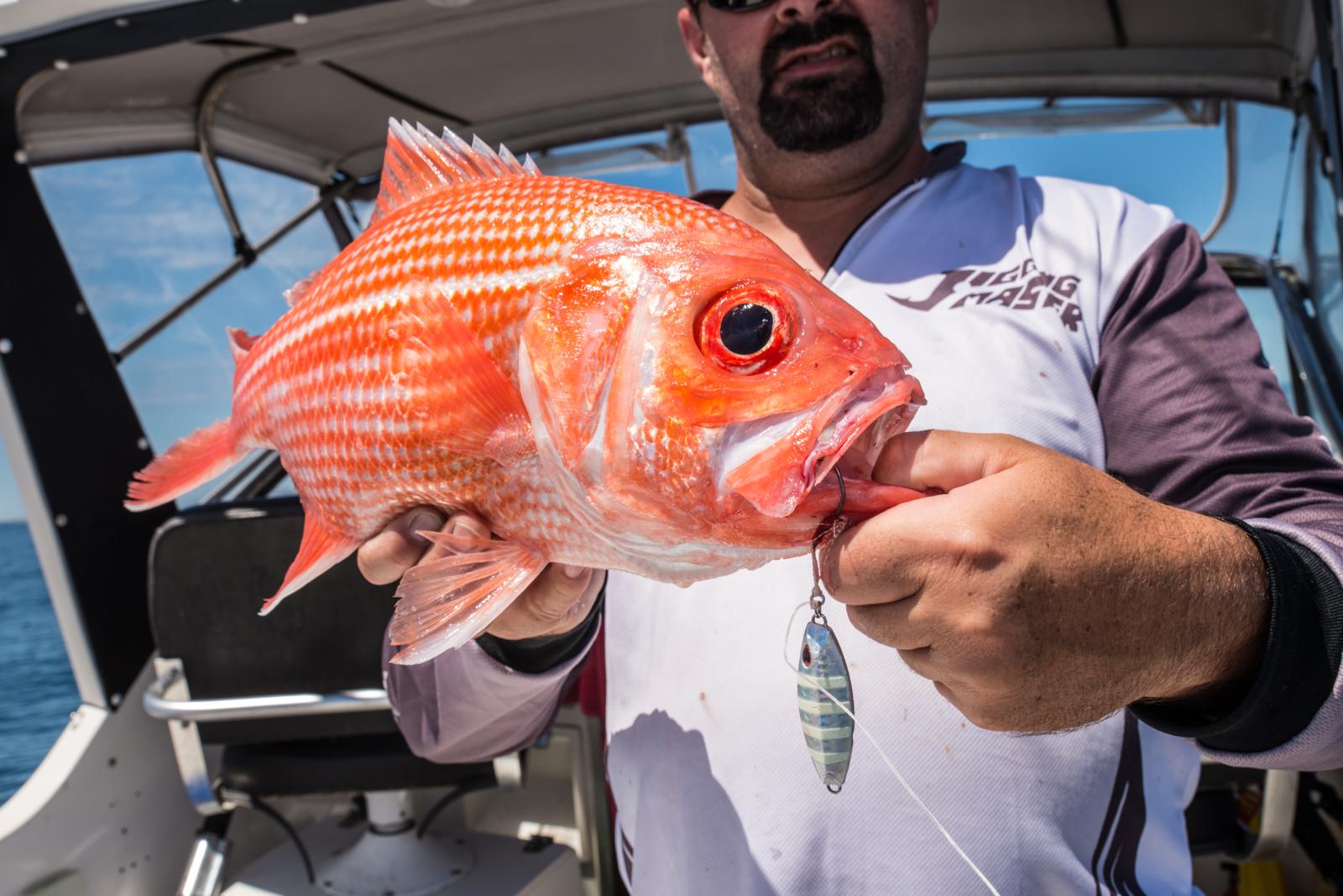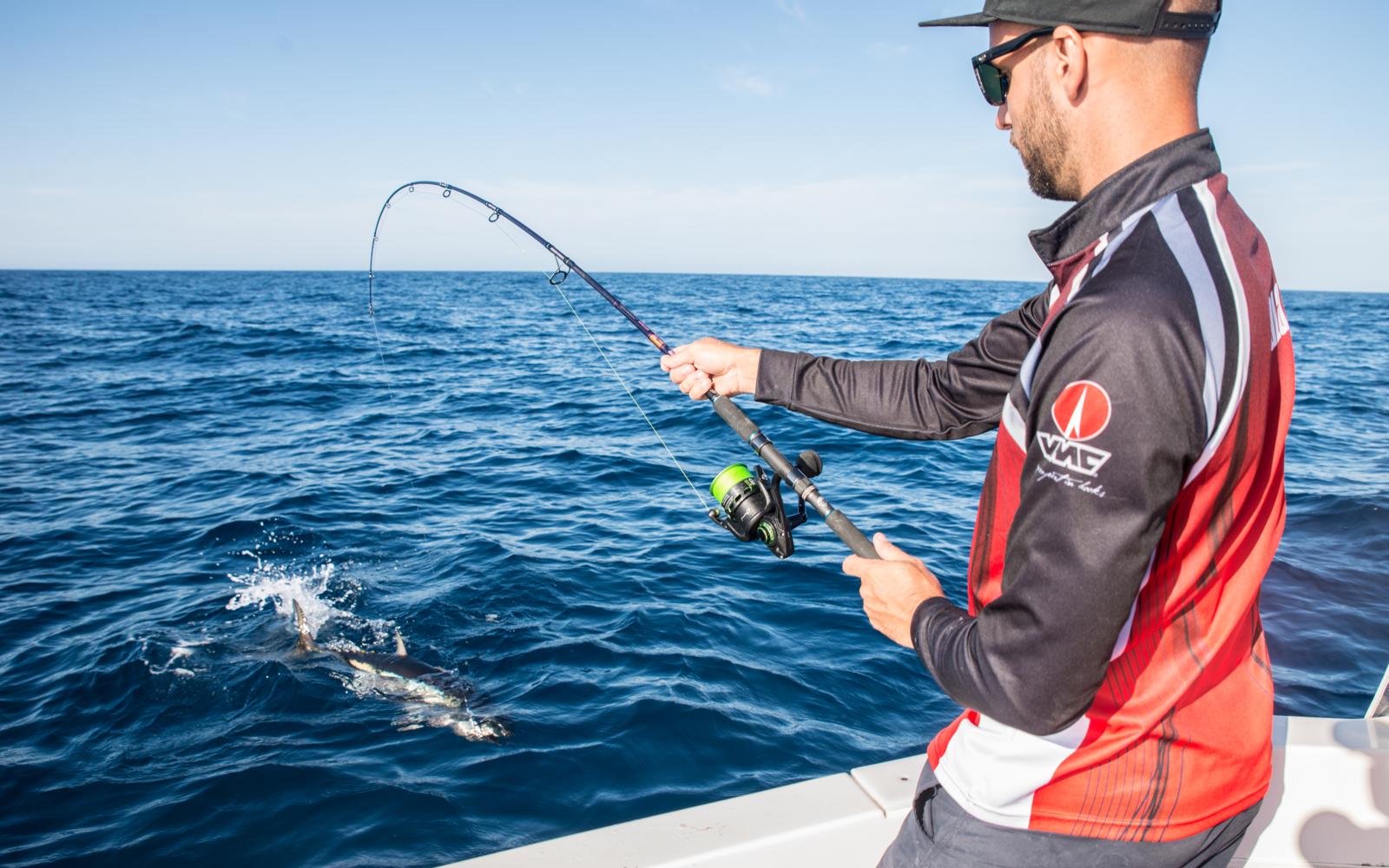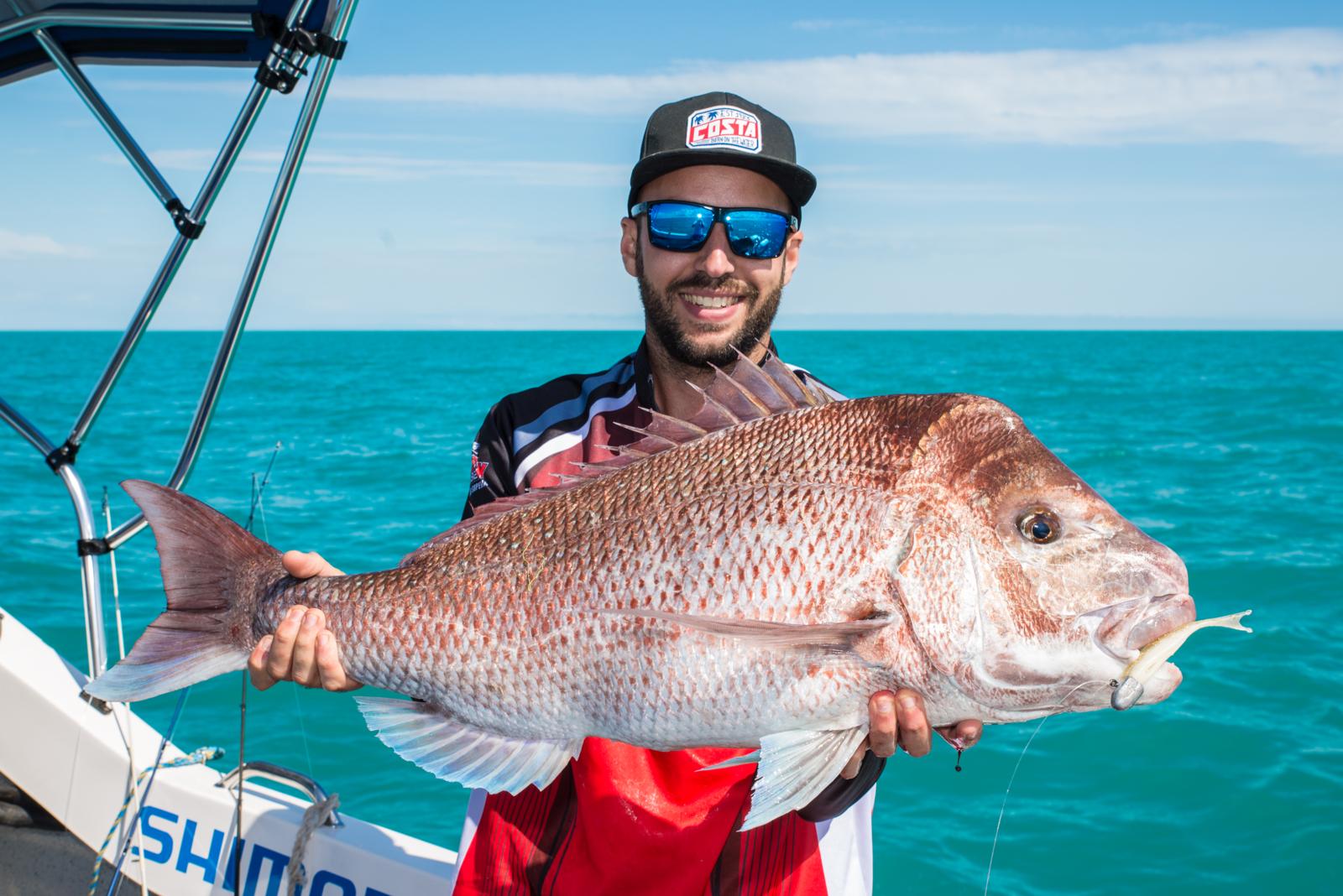
THESE days anglers are faced with a multitude of fishing options and styles. Long gone are the days of a bait only proposition with a plethora of lures now available on the market to suit even those species that were previously never considered a potential lure target. Such advancements have meant a shift develop over time across the recreational fishing spectrum. At one end you have the avid lure nuts that simply won’t deviate from their use regardless of the scenario. Instead they’d prefer the risk of returning home empty handed than resorting to dirty old bait fishing. The sport fishing vibe ties in here as there’s undoubtedly
a more challenging and rewarding effort in landing fish on artificials as opposed to “cheating” with bait, which is how I’m sure these lure fishos would describe it. At the other end is the fishing beginner or old school salty that will stick to baiting techniques through thick and thin as a result of either sheer inexperience or the perception of a generally fail-safe system. And somewhere in-between this spectrum lies the versatile angler and this is probably more of a true reflection of the general recreational fishing population. Versatile anglers who dabble in both bait and lure will naturally vary in experience levels but they all work off the underlying principle of utilising whatever is required at the time to pull results. As we’ll discover however there are distinct pros and cons that separate bait and lure styles of fishing and this needs to be first understood for the best chance of success when transitioning between the two.

Compare the Pair
The simplicity involved with bait fishing is undoubtedly an appealing characteristic for beginners to help learn the basics of catching fish. All the ingredients are essentially there from the word go when it comes to using natural bait so all that is required is some simple terminal rigging and you’re in with a shot. The downside, however, is unless you’re able to devise a self-sustaining bait system by catching or collecting your own it can be a costly exercise when you’re churning through the bait stocks. This is often the case when bites are missed or the pickers are out in force making light work of your baits. On the flipside, lures are no cheap exercise either and if you’re well and truly bitten by the artificial bug you’ll quickly find yourself knee deep in boxes of lures where most will probably stay without ever seeing the light of day. For the ones that are lucky enough to go for a swim there’s the ever present risk of losing them to fish or snags which certainly hurts the pocket if you’re paying upwards of $20, which is the case for a lot of harbody lures nowadays. In saying this you can still snag up bait rigs on the bottom and when you add it all up there’s still quite a few dollars worth of gear between hooks, sinkers, leader and swivels. Even soft plastics aren’t safe as they can easily get destroyed by unintended target species, so it’s not uncommon to churn through quite a few packs in a single session, which further increases the expense.

Maintenance is fairly similar between bait and lure fishing in that you need to replace hooks or trebles and change leader or trace material when it’s seen better days. Lures tend to lose their shine or paintwork over time with repeated use but this often proves irrelevant as far as success goes. I’ve seen plenty of dull and scratched up lures missing eyes and all sorts of things still hook more fish than brand newies straight out the box indicating there’s more at play here beyond the fancy decals. Natural scent and oil is one major characteristic that supports the use of bait and this is truly hard to beat even when you compare it against the artificial bite stimulants that are commonly recommended in conjunction with lures. Bait can be quite smelly and messy however and for some fishos this is enough to steer them towards using artificial lures. I must admit that I regularly fall into this “clean fisho” category but sometimes you just have to get in there and do the dirty business to get the job done.
One major lure benefit over bait that is certainly worth highlighting is that they offer the ability to quickly probe an area for fish responsiveness before a decision can be made to either move on or try another technique. Multiple fish can even be caught on a single lure which is a nice luxury to experience in comparison to the re-baiting side of things and this is where they can really pay off. In essence however there’s no clear winner as far as bang for buck goes provided the angler is sensible and the right style is correctly applied which leads us onto tying this in with fish behaviour.

Predicting Fish Behaviours
Predicting certain fish behaviour is undeniably one of the main drivers in decision-making for multi-pronged success on baits and lures. Experience and time on the water will pay for itself in this scenario to the point of being able to head out in confidence with a rough plan of attack of how the day should pan out. You can never be 100% certain as there are far too many influences that change from day to day but based on my own personal experience it is still quite simple to form your own guidelines for certain target species as I’ll endeavour to explain.
Our last few bluefin tuna trips have been prime examples where each time the fish were switched onto lures early morning and we landed quite a few on surface stickbaits and trolled divers. By mid-morning however the bite had shut down with the sun moving higher into the sky but the fish were still in the area as they could be visualised both on the sounder and rippling on the surface. A change of tact was required and we resorted to cubing pilchards which inevitably saw the fish respond and we were back into the action. By this stage we were sitting on top of a paddock of tuna but they still wouldn’t touch an artificial, even the smallest metal slice we could find to try and match the hatch. It was obvious that even pelagic eating machines like tuna can change their behaviours at the flick of a switch and the need to resort between bait and lures was further supported. This knowledge made our subsequent trips much more successful with the ability to plan out the morning with a transition from lure to bait fishing as required.

Snapper have been another species that over time have highlighted the differences in their behaviour and feeding patterns that require an adjustment in target methods. The most obvious occurrences have been evident when fishing alongside commercial fishermen who utilise a bait only policy. The look on their faces when we were pulling fish on soft plastics whilst they couldn’t even wrangle a bite was priceless to say the least. But after a little while the fish changed behaviour and all of a sudden it was their baits gaining all the attention and not our lures anymore so a quick change to baited rigs was in order to stay in the game. Shallow water fishing can also dictate the lure or bait decision. On the shallow grounds we frequented in the past the bite was only ever a very short window so we really had to place all of our eggs in the one basket with baits being the first port of call. This way we had an offering down below for when the fish hopefully move through on their short raids but at the same time I could still have a casual flick of a soft plastic whilst we played the waiting game. This has been adapted from years of experience fishing our grounds and you really can’t put a price on this sort of knowledge.
Even highly cunning fish such as yellowtail kings can still be somewhat predictable in behaviour to help decide on the best target method. Low light fishing tends to yield best results from a lure perspective with topwater bites more common around dusk or dawn. This is not a hard and fast rule but more of a loose theory to go by. Jigs will also account for kings and in shallow environments this is even more pronounced around the same low light periods. I vividly recall one session repeatedly dragging livebaits through a massive school we were working without even a sniff yet prospecting casts with metal jigs from other boats resulted in multiple hook-ups from the same school of fish. Why these kingfish would overlook two prime live squid dragged past their nose and take preference to a metal fish imitation was largely surprising to me but nonetheless it further highlighted the versatility required to move between the two styles depending on the bite preference.
Tides can also be a significant determining factor for a lot of fish species and thus need to be factored in to the equation. For example I like to really hammer the lure side of things on tide changes when the bait action often slows as sometimes you can provoke a reaction bite if you annoy a fish enough by repeatedly working a lure in its face. Once the tide is up and going however it really comes down to the angler to make a judgement call on the best method to be adopting and this is further refined by the specific target species.

The Versatile Angler
The ability to confidently change between techniques is a rewarding skill to possess but this can only be developed from time on the water and the risk involved in mixing it up when things aren’t working. Anything from changing the type of bait and lure colour or design through to alternating between the two techniques are all worthy of a try. Confidence should gradually increase over time and once the patterns become obvious the results will no doubt follow suit. It quickly becomes evident that not one style alone is the preference for many target species. Instead a multi-pronged attack with bait and lure is often the go-to option provided they are applied correctly. It’s undoubtedly the versatile angler who holds the advantage in this setting as far as potential success rates go.
















